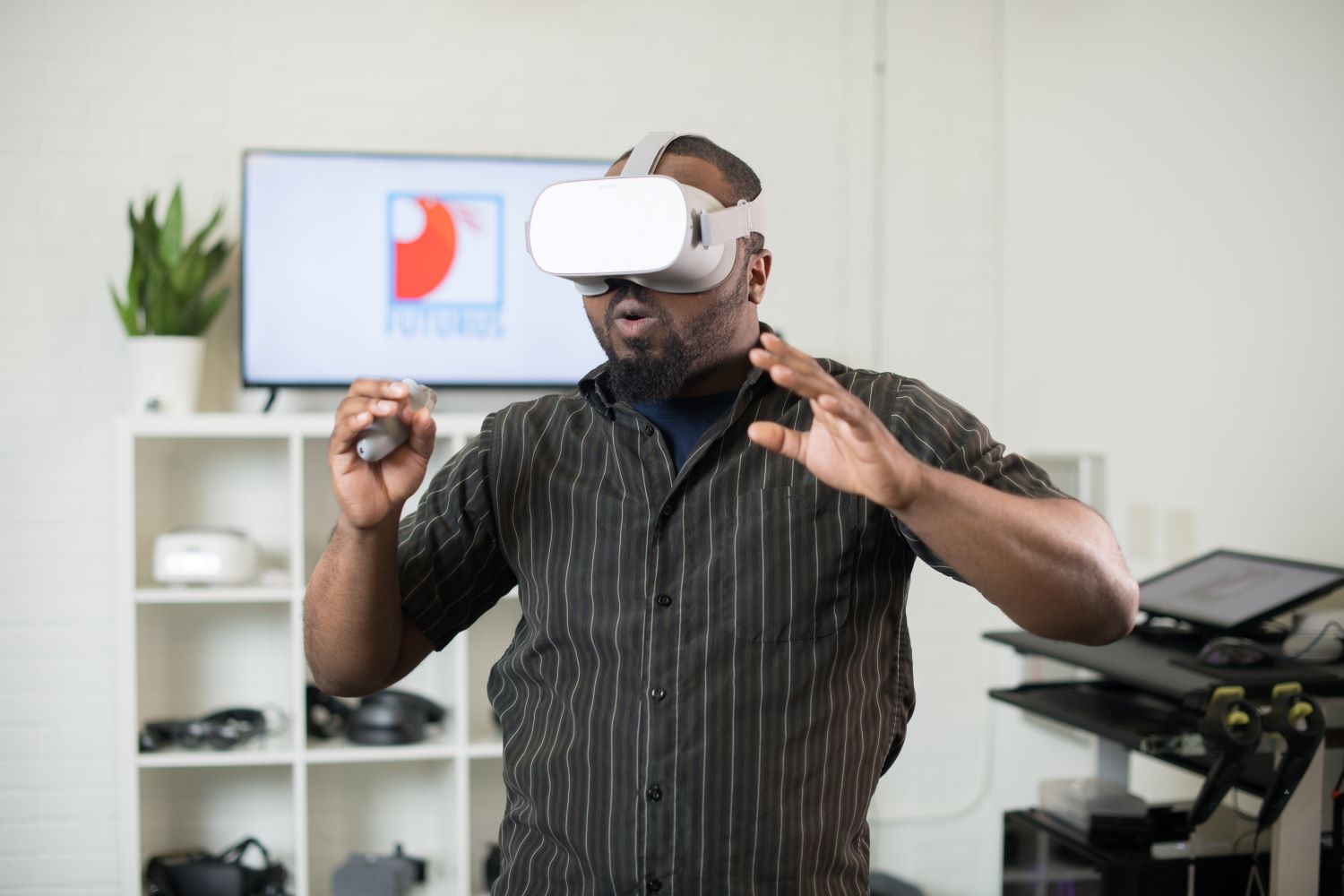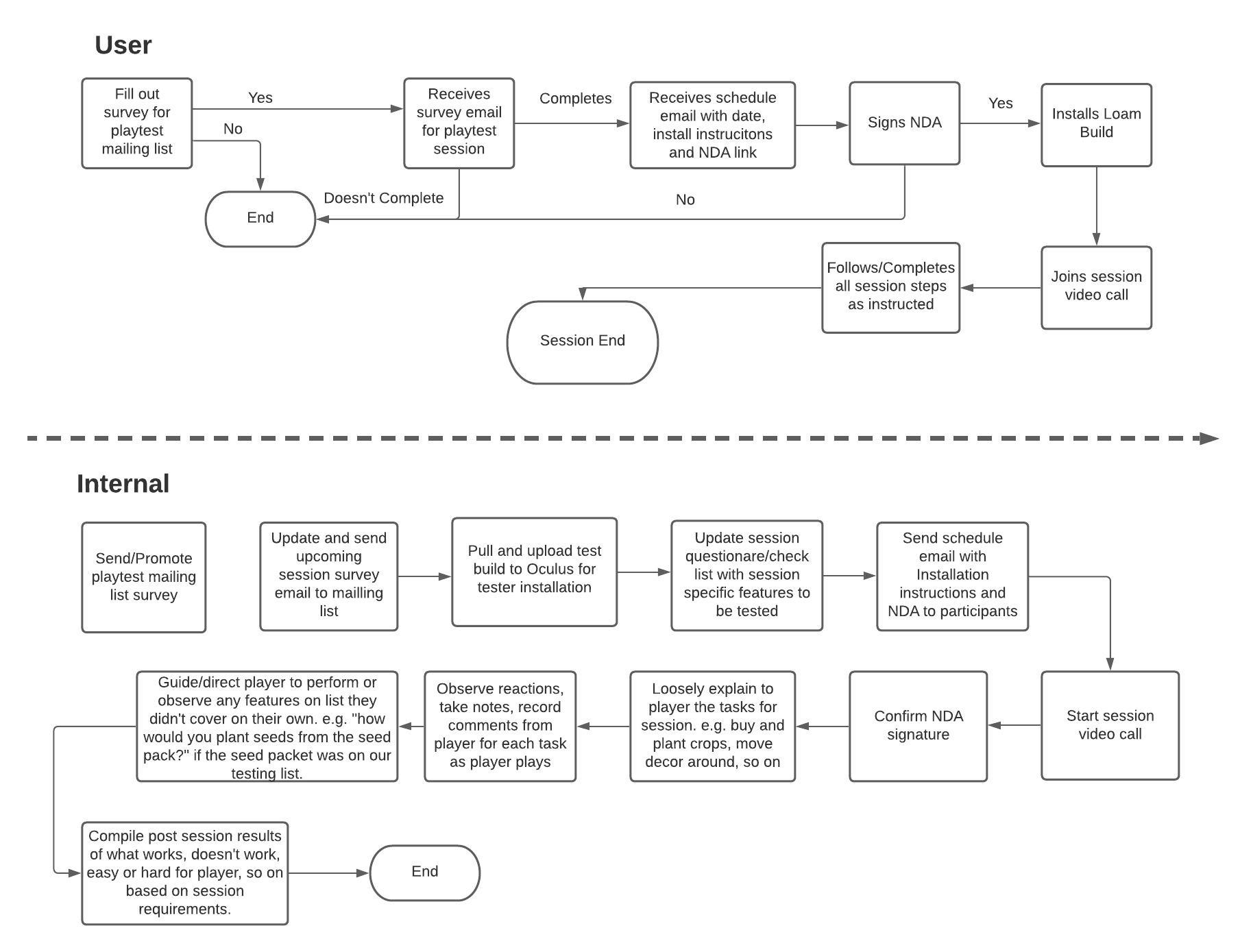PLAYTESTING: WHAT TO EXPECT

Written by Paul Welch




Playtesting can help you determine if you need to address any design issues.
What is the difference between QA (quality assurance) and playtesting?
Quality assurance is more of an internal system for finding bugs, verifying features and gameplay functionality. A lot of time is spent on QA to find, confirm, and reconfirm any errors in code or design. The QA team then documents how these issues and bugs can be recreated reliably, laying them out in a digestible manner for developers and designers to be addressed. Depending on the project, this can be a very time-consuming task.
Playtesting is a system where external players are brought in to play a game. During these sessions, we look for things like: How well does a feature match the intended design outcome when being used by a player? Does this feature meet the designers’ goal? How well does the UI (user interface) flow works? Does the player interact with the game world in the way we expected, or if not, what did they do and why?
Players are unpredictable in many cases, and we must design around what we want them to do and what they might do. We cannot always guess how players will use what we give them, so this process helps us find that out. These sessions are not meant for finding bugs since, hopefully, most were found during the QA process. Of course, sometimes they slip through, and we take note of those when they show up during sessions.
How did you get started in playtesting?
When I was in high school I participated in various in-person playtest sessions for larger game studios. These were pretty few and far between, though, maybe a couple a year at most. It was not until I was in college that I spent a lot more time doing it for a couple of companies that specialized in organizing these sessions online for developers. At the peak, I was clocking around 30 hours a week doing playtest sessions. I have more than five years of uninterrupted experience being on the player side of these sessions, and now I am on the development side with Amebous Labs.
How can others get involved in playtesting?
A lot of studios and platforms allow you to sign up for beta testing through their account settings. While these are not the same as a playtest session, occasionally, a studio may send out an email inviting people for a session who have signed up through these steps. There are also a handful of companies in the industry that specialize in organizing and running playtest sessions for studios; one notable is The Global Beta Test Network. Typically, you fill out a survey or questionnaire, and if you fit the demographic they are looking for, they will accept you for a session. If you don’t get accepted right away, do not be discouraged since every session has a different set of criteria for what they are looking for in the players they choose. Some of the things they look for might be interest in specific game genres or experience level with said genres. They may want an experienced player in one session but someone that is new to the genre in the next, so you never know.
We have playtesting opportunities at Amebous Labs. Fill out this survey to get added to our session notification email list.
What does a playtesting session look like?
Sessions can take many forms, from UI layouts on printed paper to chopped up small sections of a game with specific goals to full game builds and play-throughs. Ultimately it comes down to what the developer is trying to learn from a session and how that data needs to be collected.
What happens in a session is determined by the specific goals of the session. For example, the developer might want to know to how players react to and interact with a specific event that happens during a particular level. Do they just follow the laid-out directions, or do they explore and try to do things outside the design scope? They need to run this test with maybe a dozen people so that they can see if certain outcomes are done by more than a single player or not. As a player, you might be told to go directly to a particular area and start a mission and play through it. We would then monitor to see if you did anything during the mission that was outside our design intentions, like to activate the mission, you have to enter a certain building, but you left the building right away since one of the tasks was easier to achieve outside even though the designers meant for you to stay inside the whole time.


What are the top 3 tips for running a successful playtest session?
For those who are on the development side, some tips for running a successful playtest include:
1. Pay attention to the player and their actions. Listening to what the player is saying out loud during a one-on-one session, as well as paying attention to their body language and in-game actions can tell you a lot about how they feel about something. It might take a player several tries to understand how to perform an action and, in the process, might get a little agitated even if they do not realize it. They might say something they were doing was not hard after figuring it out, but you could tell they got a little upset while trying to learn how to do it through their body language and actions. This can help you determine if you need to address a design issue to help guide players better. It might or might not be bad that the action they were performing was challenging to learn, that is your decision as a developer, but now you have some data points to consider.
2. Do not take comments personally, and do not get defensive with the player. This is not a judgment on how you or the developers are doing. They are simply commenting on what they see right in front of them and stating how they feel about it. Take note of the comments and see if you can use them to help guide development in a better direction if they form a common theme amongst all the players that participated. No matter how good an idea sounds on paper, it does not always work out in action, and that is why we are testing with people outside the development team to get honest opinions. At the same time, always be understanding, and do not get annoyed with a player’s performance or actions in games. We are not trying to judge how good or bad the player is, but rather our own work. If a player does not understand a feature, then simply explain it to them if it is an action they need to take to move forward or guide them to skip it. Not everyone is going to have the same experience or skills in the game that you are testing.
3. Have a clear goal for each session. Layout what areas of your game you need tested and clearly defining what you are looking for before the session. This will help you guide the tester through the session and accomplish your goals. Even though some sessions might be more of a stress test of sorts, there will still be some main focal points or actions you need a player to focus on, and be able to guide them to these quickly will help.
We’ve started our playtest sessions for Loam and would love your help. Not to worry if you don’t have to have an Oculus Quest; we made sure to have multiple options for everyone to give their input. We also made it easy for you to sign up to playtest; click here to answer a few questions. We look forward to showing you a sneak peek into Loam.



